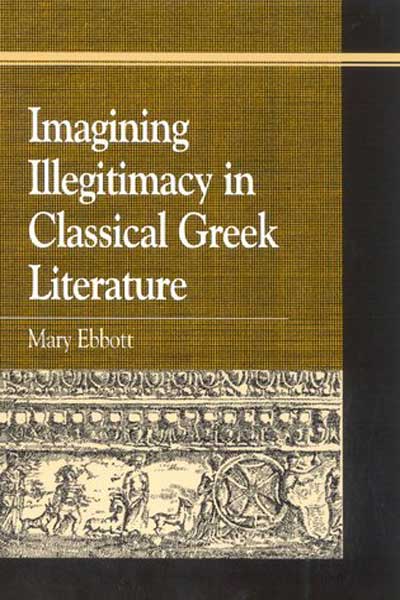Imagining Illegitimacy in Classical Greek Literature
In Imagining Illegitimacy, Mary Ebbott investigates metaphors of illegitimacy in classical Greek literature, concentrating in particular on the way in which the illegitimate child (nothos) is imagined in narratives. Employing an approach that maintains that metaphors are a key to understanding abstract ideas, Ebbott connects the many complex metaphors associated with illegitimacy to the ancient Greek conception of illegitimacy. The…
In Imagining Illegitimacy, Mary Ebbott investigates metaphors of illegitimacy in classical Greek literature, concentrating in particular on the way in which the illegitimate child (nothos) is imagined in narratives. Employing an approach that maintains that metaphors are a key to understanding abstract ideas, Ebbott connects the many complex metaphors associated with illegitimacy to the ancient Greek conception of illegitimacy. The nothos as imagined in ancient Greek literature is metaphorically connected to concerns about gender, reproduction, marriage, and concepts of polity. By decoding the metaphors of nothos mapped to these concepts, readers gain access into these ideas and their relationship to one another. The complex portrait of nothos portrayed here examines a wide variety of works, from Euripides, Homer, Sophocles, Herodotus, and many others. By analyzing the imagery connected to illegitimate persons, Ebbott arrives at deep insights on how legitimacy and illegitimacy in Greek culture were deeply connected to the concepts of family, procreation, and citizenry, and how these connections influenced cultural imperatives of determining and controlling legitimacy.
Originally published in 2003 by Lexington Books as a part of the series “Greek Studies: Interdisciplinary Approaches.” Copyright, Lexington Books. Available for purchase in print via Rowman & Littlefield.
Use the following persistent identifier: http://nrs.harvard.edu/urn-3:hul.ebook:CHS_Ebbott.Imagining_Illegitimacy_in_Classical_Greek_Literature.2003.
This work is licensed under a Creative Commons 3.0 License.

